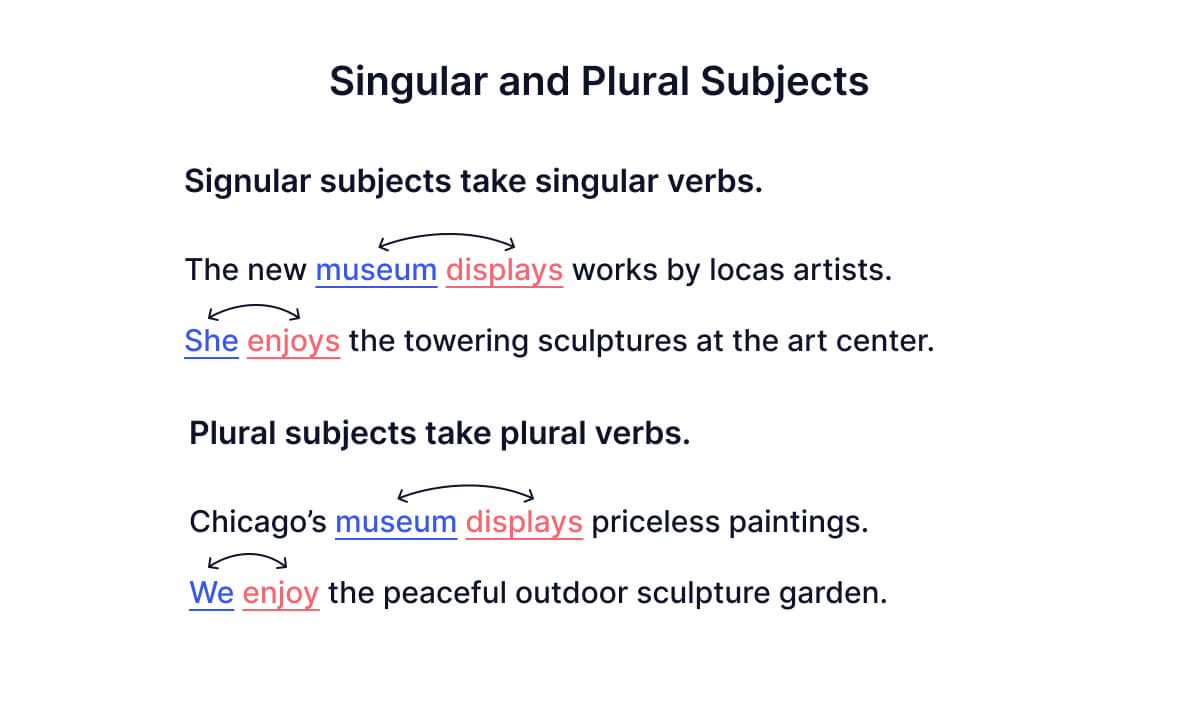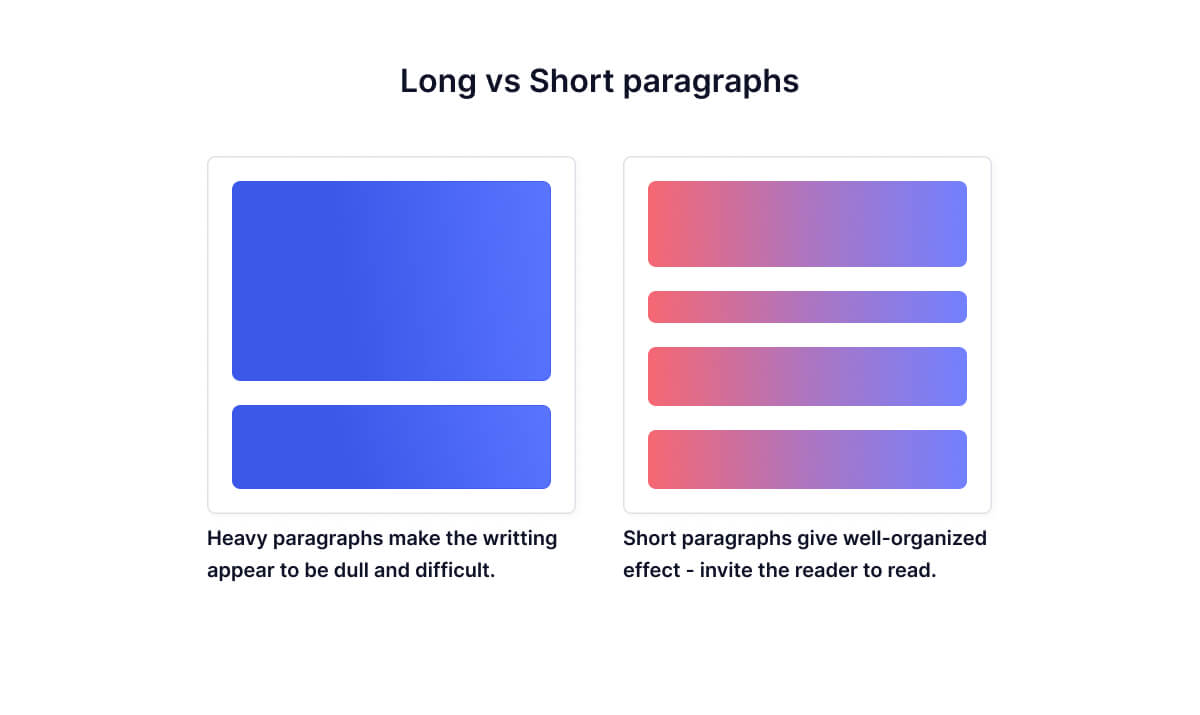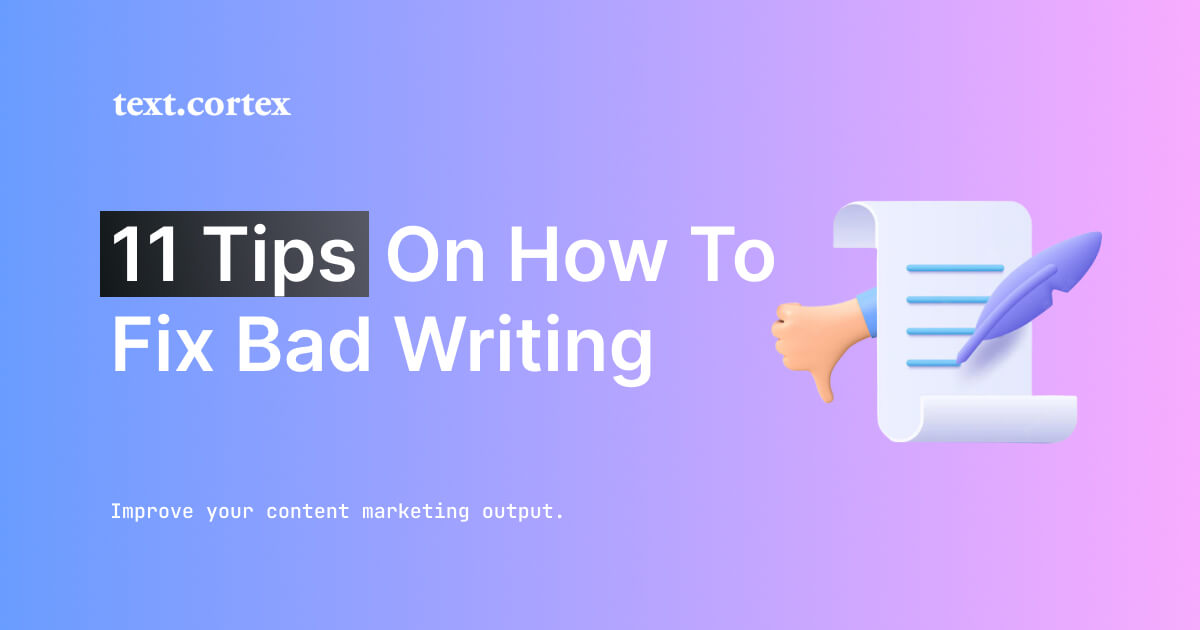As a writer, the worst feeling is when you are reading something you wrote, and it just sounds awkward, poorly written, and just wrong.
Bad writing is one of the top reasons behind people abandoning your content.
And it is a huge issue in content marketing.
The problem with bad writing is that it wastes people's time and results in them bouncing away from your website and not using your product or service.
On the other hand, it could hurt your brand in the long run.
Creating bad content happens to every writer on their writing journey, and it’s pretty normal to happen to you too.
But, you should seek to be better and not let bad writing be your synonym.
How?
In today’s article, I’ve put together a list of 11 tips designed to help you discover how to fix bad writing quality in your own content and create better articles in no time.
So if you’re ready to improve your content, let’s begin!
Characteristics of bad writing
Before we get to the tips, it's important to realize what makes bad content, so you don't make those mistakes in the future.
Bad writing in content marketing is any written content that fails to engage or persuade your readers to take action.
It is a serious problem.
So, before you write your next blog post, article, or eCommerce product description, ask yourself these questions about your content:
- Does it make sense?
- Is it well-organized?
- Does it have a beginning, middle, and end?
- Does it have a central point — the thing you want people to take away from the post?
- Is it too long?
If your answer to most of these questions is "Yes," chances are good you've written a quality piece of content.
But to be honest, in many cases, there are parts of the articles that need improvement.
So let’s get to the tips on how to fix bad writing and create articles that users will adore reading.
How to fix bad writing - 11 tips to write compelling articles
1. Make sure every sentence has a subject and verb
This might seem like a no-brainer, but every sentence in content writing needs to have a subject and verb.
Subject-verb agreement is one of those rules that isn’t hard to master, but many people still screw it up.
This can be done by following a few simple guidelines:
1. Avoid using it as your subject unless you mean that your audience understands that you are referring to an object or place.
2. The simplest way to ensure you’re using subjects and verbs correctly is to read your sentences out loud.
3. Make sure you don’t mix singular subjects with plural verbs.

An easy way to check if something is correct? Use a tool such as Grammarly.
2. Cut down on adverbs
For good content marketers, editing is key to making a piece of writing flow and a valuable article.
However, for some content marketers, fixing bad writing is about going back in and rethinking how it's said from scratch.
Usually, too many adverbs lead to overwriting, which can be tiring for the reader. Make sure to simplify your sentences as much as possible to make them engaging and easy to read.
But it's not enough to cut down on adverbs or change punctuation or grammar.
Instead, it's necessary to pull apart sentences and rework them until they really say what you mean.
See how a small missing can totally change the sentence connotation:

Read every sentence multiple times over before hitting publish, as it could make all of the difference between a great read and an average one.
3. Shorten the paragraphs for easier reading
Is your content easy to read?
One of the best things you can do to fix bad writing is to shorten your sentences and paragraphs.
It’s probably not what you’d expect. It’s not a matter of improving vocabulary, better word choice, or enhancing sentence structure.
Instead, it's a question of making your writing more readable.
It has to do with how people read the page. There are many studies on this, but I will give you a short version.
If the paragraphs are too long and there's no whitespace, it's hard for readers to find their place in a new thought with each new paragraph.
Because people don’t read content - they scan it and look for information they need.
If you don’t make it easy for them to find information, they’ll probably leave and find it elsewhere.
Adding extra breaks in your paragraphs will give your content more clarity and ease of reading.

See how the right paragraphs provide a more positive effect?
Pro tip: You can easily simplify your sentences and paragraphs by rewriting them to be easier to read, which the TextCortex Chrome extension can help you with.
Just highlight the sentence or paragraph you want to rephrase, hit the “Rewrite” button, and choose the output that fits you most.
What’s great about TextCortex is that you can rewrite your content within any textbox online without switching platforms where your content is.
4. Get rid of cliches
A big culprit of bad writing is cliches, and a lot of cliches start out as being just fine.
They gain popularity for a reason, but they're misused so much that people look at them with horror over time.
Don't rely on cliches because they've become overused or meaningless.
If you can't think of an original way to say something, don't say it at all.
To write a good piece of content, eliminate these clichés from your vocabulary.
Doing so will make you more creative and help keep your writing fresh and unique.
5. Simplify your language for higher conversions
The simpler you keep your language, the better off everyone will be.
You're not writing a dissertation.
You're trying to get the point across quickly and efficiently.
If there are long sentences or big words, cut them.
This will make your content engaging and easy to read and will drive your readers smoothly through the funnel.

6. Improve your tone for better personalization
What can instantly drive your readers away from reading an article? In many cases, it's the tone.
Some articles on writing topics will tell you to avoid using an informal style, but that's nonsense.
What you should avoid is using an inappropriate tone.
For example, a company selling software to financial institutions needs a very different voice than a company selling candy to children.
If you try talking to financial institutions as if they were children, no one will read your articles.
Instead, make sure to know who you're talking to and adjust the tone according to your readers.
7. Check facts and data points
If you're making a claim, support it with data.
Make sure the data is correct — numbers are easily misstated, and even reputable sources can get them wrong.
To build credibility and don't screw it, you must check every fact and data point, so you provide readers with correct information only.
If your source has conflicting information with other sources, try to find out what's right by looking at multiple places — not just the first thing on Google.
Checking 1st result on Google doesn’t mean that the information from the source is correct.
8. Avoid Passive Voice
The biggest mistake most writers make when it comes to writing is avoiding the active voice.
Passive voice can be a problem when you're writing for the web or social media because it makes your content sound dull and lifeless.
There are many reasons why passive voice can be bad for your writing. Here are a few of them:
1. It's boring - While many people will read your message without taking any action, writing in an active voice can keep readers engaged.
The reason is simple - you actively engage with your audience when you write in an active voice.
2. It's unnatural - If you've ever tried to speak while thinking of what to say next, you know how unnatural and awkward that feels. With writing, it's no different — having to think of an active verb is unnatural and makes it more difficult to write well than when you're just thinking about what you want to say next in a sentence.
3. It's harder to read and understand - Using "to be" verbs is also unnatural — it makes reading more difficult than if you were using "is" or "are" verbs, which are more common in everyday conversation and thus easier for most people to understand.
So based on this, make sure to rewrite your sentences into active voice if you wanna drive better engagement and keep your readers longer on the website.
9. Read it out loud
Fixing bad writing is a lot like fixing a bad photo. The more you do it, the better you get.
Over time, you'll learn to spot most of your mistakes. But there's one thing that can help you improve your editing skills much faster:
Read your writing out loud.
I know what you're thinking. That sounds pretty weird.
But trust me… It works!
It's easy to miss mistakes when your eyes are doing all the work. Reading out loud forces your brain to slow down and actually "hear" every word in your content.
It will help you notice words that might not sound right together — without giving you time to skip over them like you would when reading in your head.
If your copy sounds stilted when read aloud, rewrite it until it doesn't.
Reading aloud is the most effective way to identify awkward phrasing or grammatical mistakes.
Be sure to read from your audience's perspective, not from the point of view of someone who has been immersed in the idea for months.
10. Have someone else read your work
Not even professional writers are immune to bad writing.
If you’re serious about content marketing, you must work with a person whose job it is to read your work and fix any bad writing that may exist.
You can either choose a freelance editor or ask someone else to look at your content before publishing.
A fresh set of eyes will identify mistakes you wouldn’t catch yourself, which is why it’s important to have someone else read your work.
11. Use tools to check grammar
Fixing bad writing and catching all your mistakes is no easy task, no matter how well you proofread.
Even if you have impeccable grammar and great style, it can be hard to find mistakes, especially if your eyes tend to glaze over after reading a few paragraphs.
Luckily, many tools are available that can help you catch those pesky typos and grammatical errors—especially before sending out an email or publishing a post.
Here are some of the tools that can help you in this process:
1. Grammarly - offers free online editing for personal use. This tool will automatically fix the most common spelling and grammar mistakes (and even has a plagiarism checker).
2. Hemingway App - another useful tool for polishing up your writing. It highlights sentences with complicated wording or overly complex structure so you can focus on these areas when editing.

Improve the quality of your content
I hope these tips on how to fix bad writing in content marketing will help radically improve the quality of your future content for your blog so that people will actually want to read and share.
Applying them will help increase the reader's time spent on your blog, leading to higher conversions.
To help you create more content that includes all these rules and ranks high on Google, we created TextCortex - an AI writing tool that saves up to 70% of your time and money by creating content in seconds.
How does it work?
While other AI writing tools use GPT-3 for every kind of content in a one-size-fits-all approach, we train smaller expert AIs on the specific use case.
TextCortex trains its use-case modules with 3 billion sentences to write unique, high-quality content on different topics, formats, and features.
Not only TextCortex follow all these rules for writing easy-to-read articles, but our creators lead to higher relevancy while significantly impacting the quality of your output.
How to use TextCortex to create compelling blog posts?
Just enter the platform you’re using for writing, and go with the 5-word idea about the topic you want to create content for.
Then, highlight the idea, hit “Long-form post,” and choose the output that fits you best.
It’s easy as that.
Using the TextCortex Chrome extension, you can create content at scale, but that’s not all.
You can also save a lot of time and money.
Using TextCortex within your workflow can drastically improve your blog posts’ quality, leads, and conversions, and you can try it for free to see if it fits your needs.
This AI tool supports your writing team, so you can easily automate and scale the whole content production process.
It’s time to stop overthinking your content, reduce costs and time spent writing, and focus on what expresses your products best.
While you focus on business, let your content write itself using TextCortex.
Download the TextCortex Chrome extension for free, and see how TextCortex skyrockets your content creation instantly. 🚀
.jpg)

.jpg)


